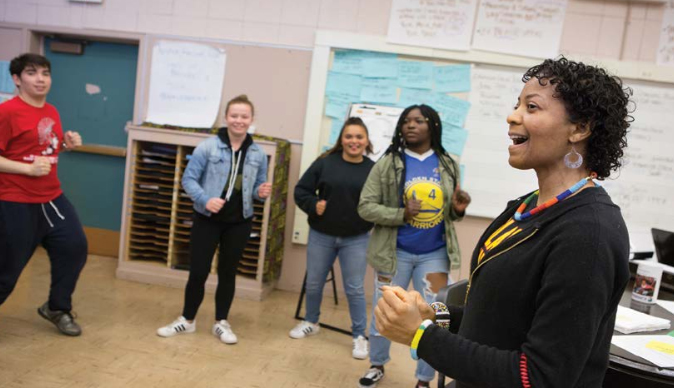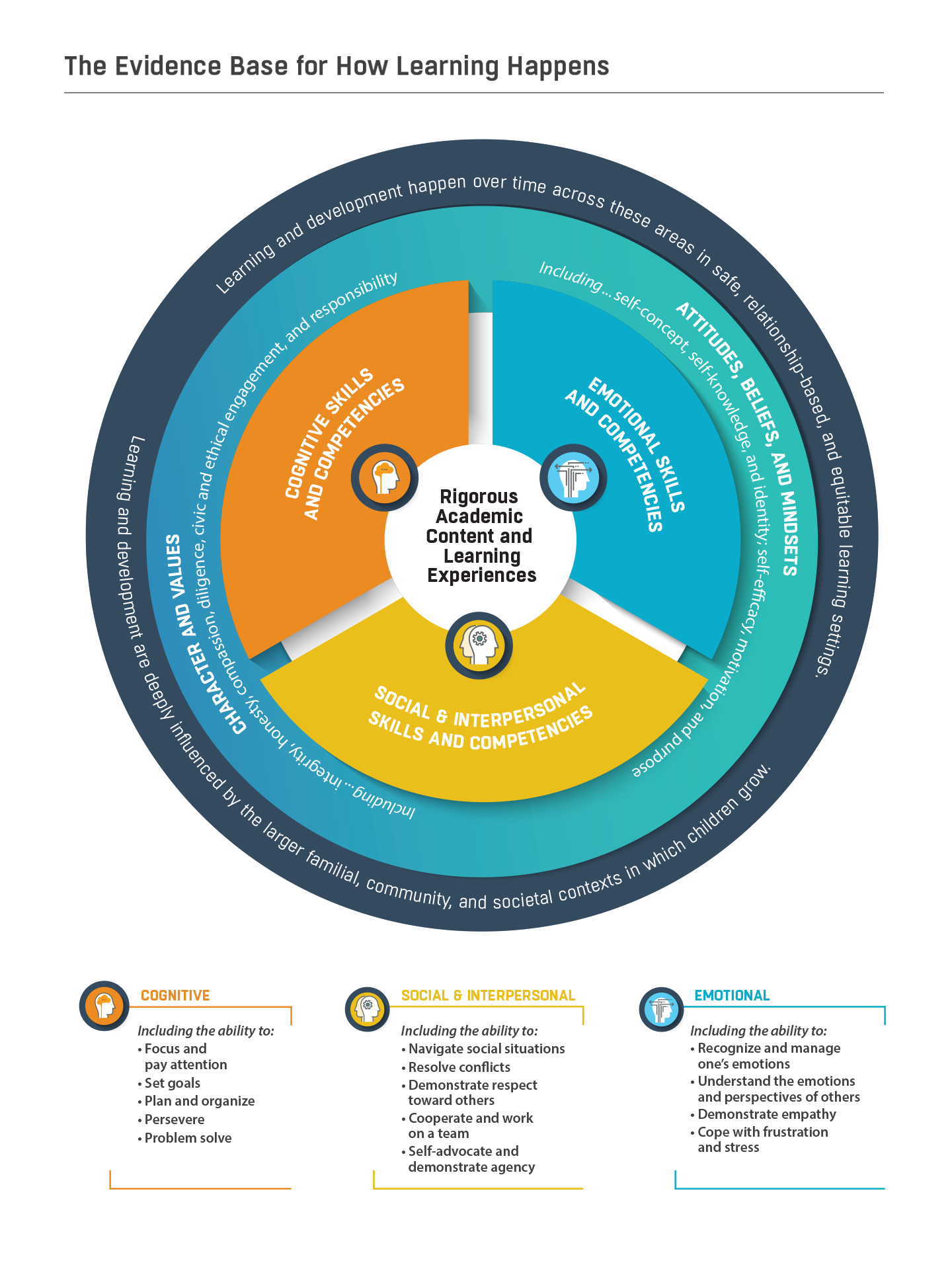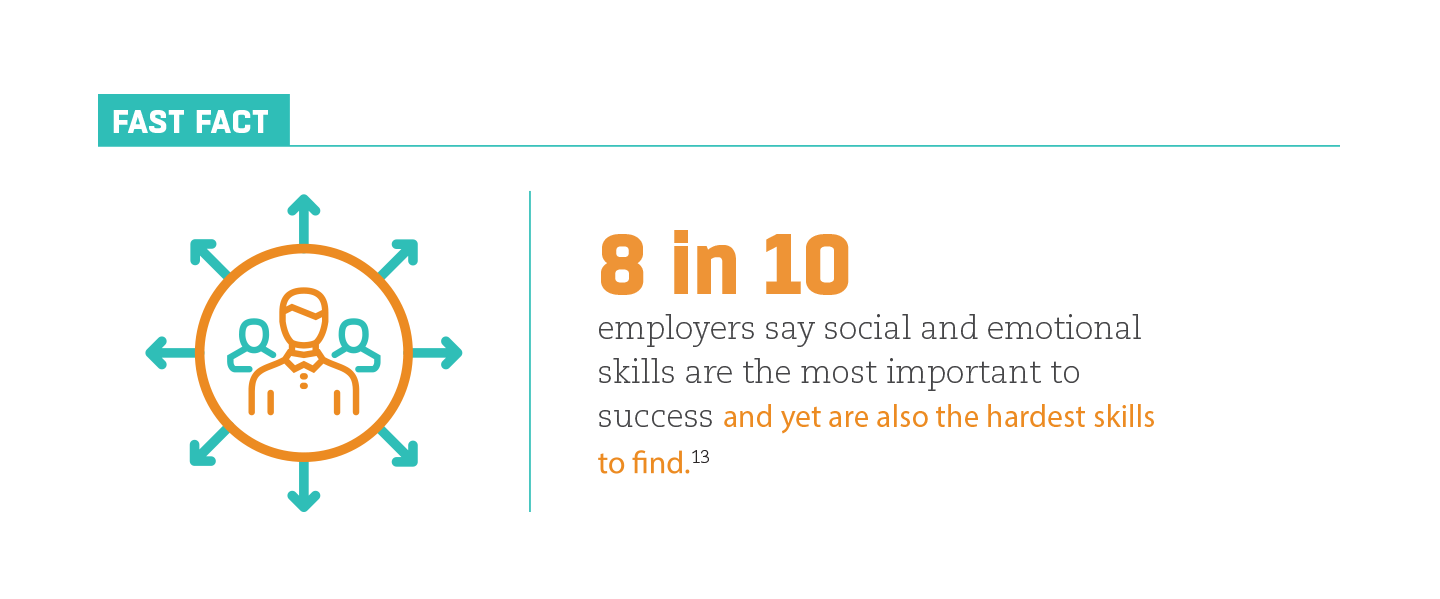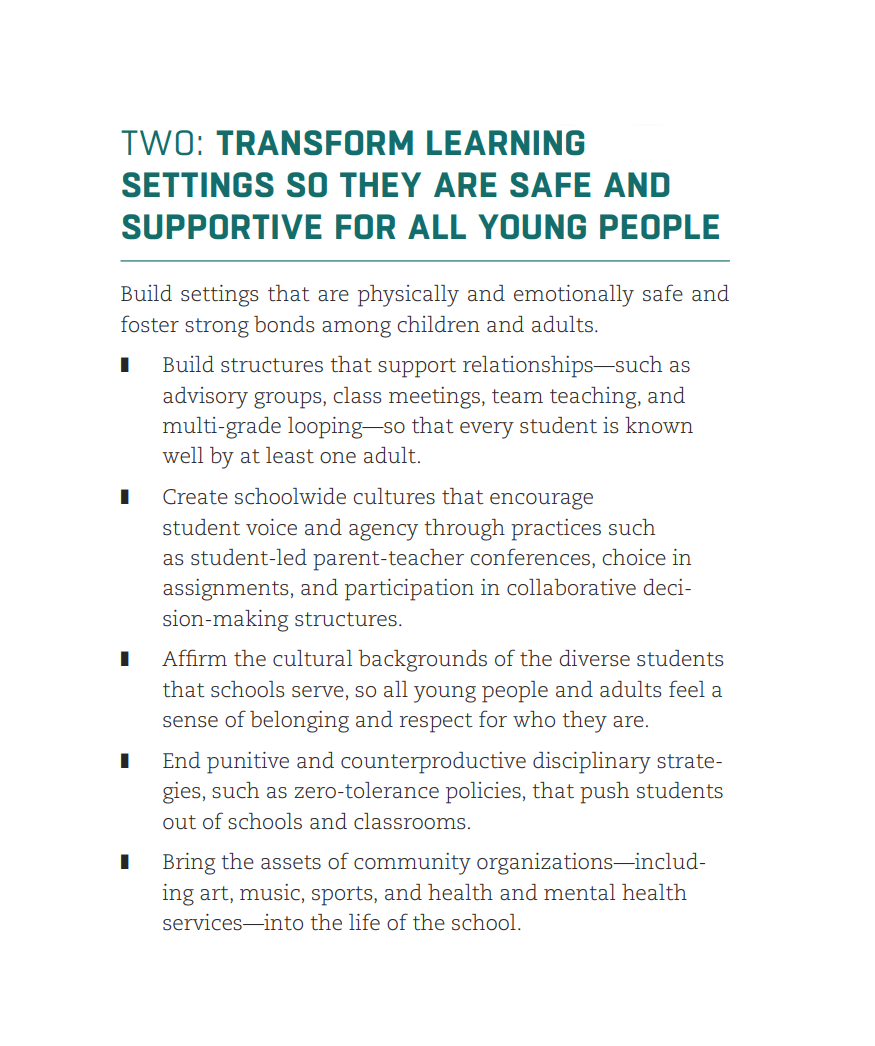
Share On Social!
Schools should reshape their environment to promote students’ social, emotional, and academic learning, according to a new report from the Aspen Institute.
In schools with little focus on social and emotional learning, students of color or those who have experienced poverty and other childhood trauma may fall behind in typical measures like grades, attendance, and graduation. They aren’t prepared for success in adulthood.
The new report explores the science of learning and makes the case for integrating—rather than separating—students’ social, emotional, and academic development.
This would benefit all kids, especially Latinos and others at-risk, for the future of our nation.
“Educating the whole student requires rethinking teaching and learning so that academics and students’ social, emotional, and cognitive development are joined not just occasionally, but throughout the day,” the report states.
“Educating the whole learner cannot be reduced to a simple set of policies or proposals. It is, instead, a mindset that should inform the entire educational enterprise.”
What Is Social and Emotional Learning?
Social and emotional learning is the process through which children and adults understand and manage emotions, set and achieve positive goals, feel and show empathy for others, establish and maintain positive relationships, and make responsible decisions, according to the Collaborative for Academic, Social, and Emotional Learning.
Learning to manage one’s emotions and navigate social situations is linked to the ability to focus, organize, and problem solve.

Learning to cope with frustration and stress and cooperate and work on a team is linked to the ability to set goals and persevere.
That’s why more than nine in 10 parents think that schools have a role in reinforcing the development of what they typically call “life skills.”
And that’s why eight in 10 employers say social and emotional skills are the most important to success and yet are also the hardest skills to find.
What Does the New Report Say?
For its new report, the Aspen Institute National Commission on Social, Emotional, and Academic Development spent two years conducting conversations, meetings, and site visits across the country on how to improve social, emotional, and academic learning.
They released their results, From a Nation at Risk to a Nation at Hope, in January 2019.

The report suggests a roadmap for change in the nation’s schools and communities.
The following recommendations, for example, aim to accelerate efforts in states and local communities by strengthening six broad categories that impact student outcomes:
- Set a clear vision that broadens the definition of student success to prioritize the whole child. For example, broaden existing definitions of a successful high school graduate to include the social, emotional, and cognitive skills and competencies demonstrated to contribute to success in school, work, and life.
- Transform learning settings so they are safe and supportive for all young people. For example, build structures that support relationships—such as advisory groups, class meetings, team teaching, and multi-grade looping—so that every student is known well by at least one adult.
- Change instruction to teach social, emotional, and cognitive skills; embed these skills in academics and in schoolwide practices. Intentionally teach specific skills and competencies and infuse them in academic content and in all aspects of the school setting (recess, lunchroom, hallways, extracurricular activities), not just in stand-alone programs or lessons.
- Build adult expertise in child development. Ensure educators develop understanding and expertise in child development and in the science of learning. This will require major changes in educator preparation and in ongoing professional support for the social and emotional learning of teachers and all other adults who work with young people.
- Align resources and leverage partners in the community to address the whole child. Build partnerships among schools, families, and community organizations to support healthy learning and development in and out of school; blend and braid resources to achieve this goal.
- Forge closer connections between research and practice. Bridge the divide between scholarly research and what’s actionable in schools and classrooms. Build new structures—and new support—for researchers and educators to work collaboratively and bi-directionally around pressing local problems that have broader implications.
 The goal is to engage, support, and facilitate the work of the many players in the field: students, families, educators, youth development professionals, business and higher education leaders, state and local policymakers, and members of the civil rights, civic, and faith-based communities.
The goal is to engage, support, and facilitate the work of the many players in the field: students, families, educators, youth development professionals, business and higher education leaders, state and local policymakers, and members of the civil rights, civic, and faith-based communities.
It’s also important to remember that the students who overcome significant adversity are the exceptions.
They should not be the yardstick to set expectations or measure success for everyone else.
“The promotion of social, emotional, and academic learning is not a shifting educational fad; it is the substance of education itself,” the report states. “It is not a distraction from the “real work” of math and English instruction; it is how instruction can succeed.”
What this Means for You
Dig into this report.
See how you can support or improve social and emotional learning in your school or community.
Families can insist on a more enlightened and effective approach to nurture social, emotional and academic growth.
Teachers, principals, and youth development professionals can make the case to central office staff and district leaders for greater resources and support.
For example, see how this student services director started a system to track and support students facing adversity.
Superintendents and school board members can examine their own practices, assess how well how their district supports the whole child, and determine how they can further advance strategies that enhance student learning.
Local and state policymakers can help recognize exemplar efforts and incentive promising strategies to educate the whole child; support the development of high-quality tools and resources that enable implementation and measures to track progress; and support networks of schools and districts to engage in joint problem solving and sharing of best practices.
See how this superintendent is pushing for legislation in Oregon to support the social, emotional, mental and physical health needs of underserved students.
Researchers can work to translate existing knowledge into evidence-based tools and practices and develop research-based measure to track implementation progress.
Funders can commit to long-term goals and accelerate coordination and collaboration to avoid duplication of effort, cover gaps, and ensure collective advancement up a single learning curve.
Share this report with practitioners, individuals, and organizations who support young people!
Sign up for the new Salud America! “Trauma Sensitive School Action Pack.” It is a free guide with coaching to help school personnel talk to decision-makers, build a support team, craft a system to identify and support traumatized students, and more!
By The Numbers
142
Percent
Expected rise in Latino cancer cases in coming years



